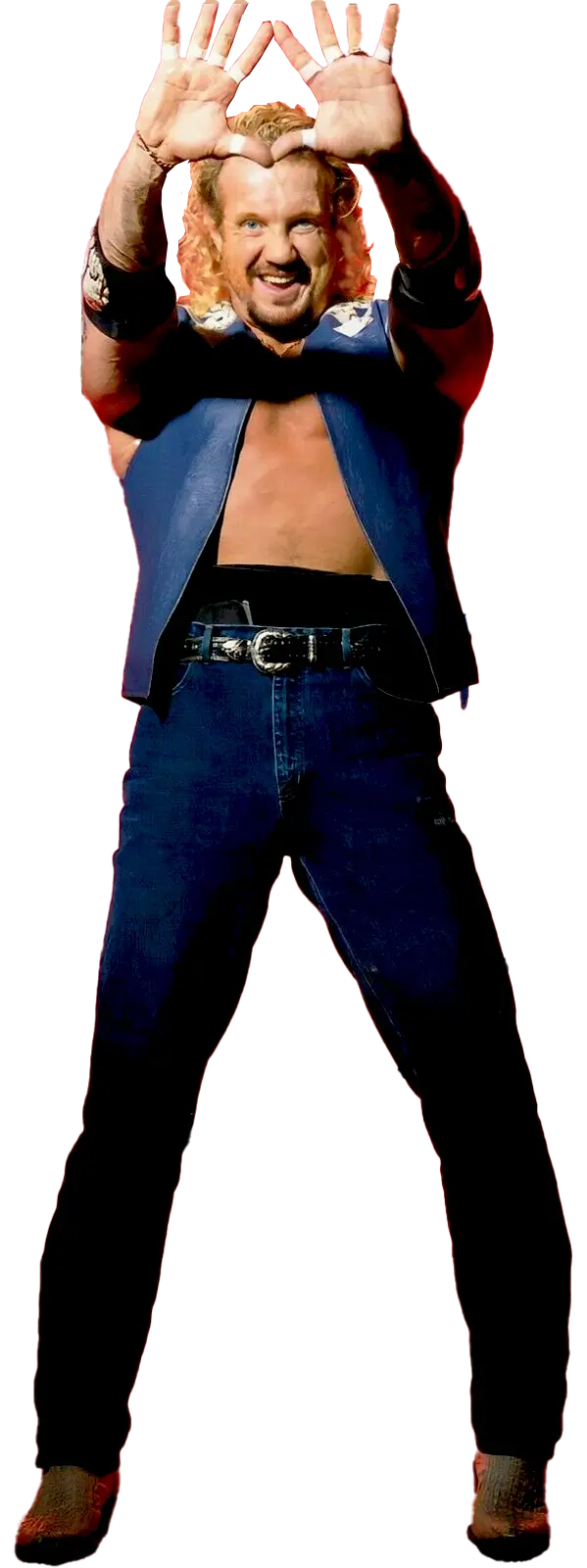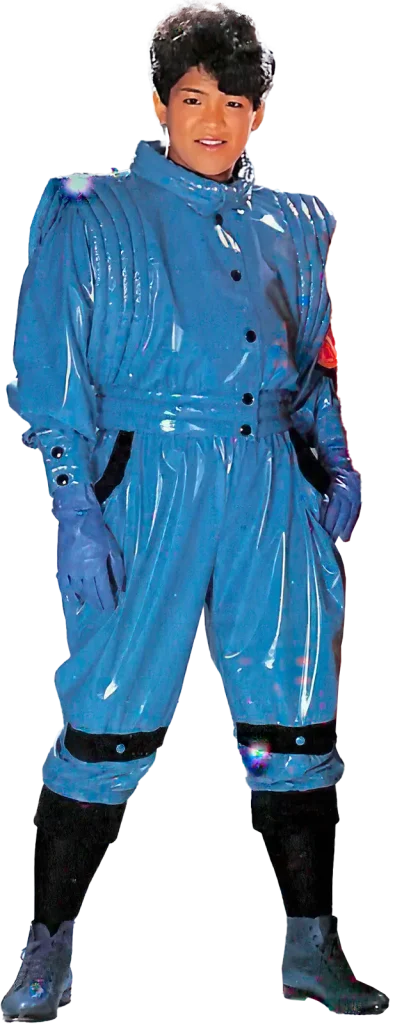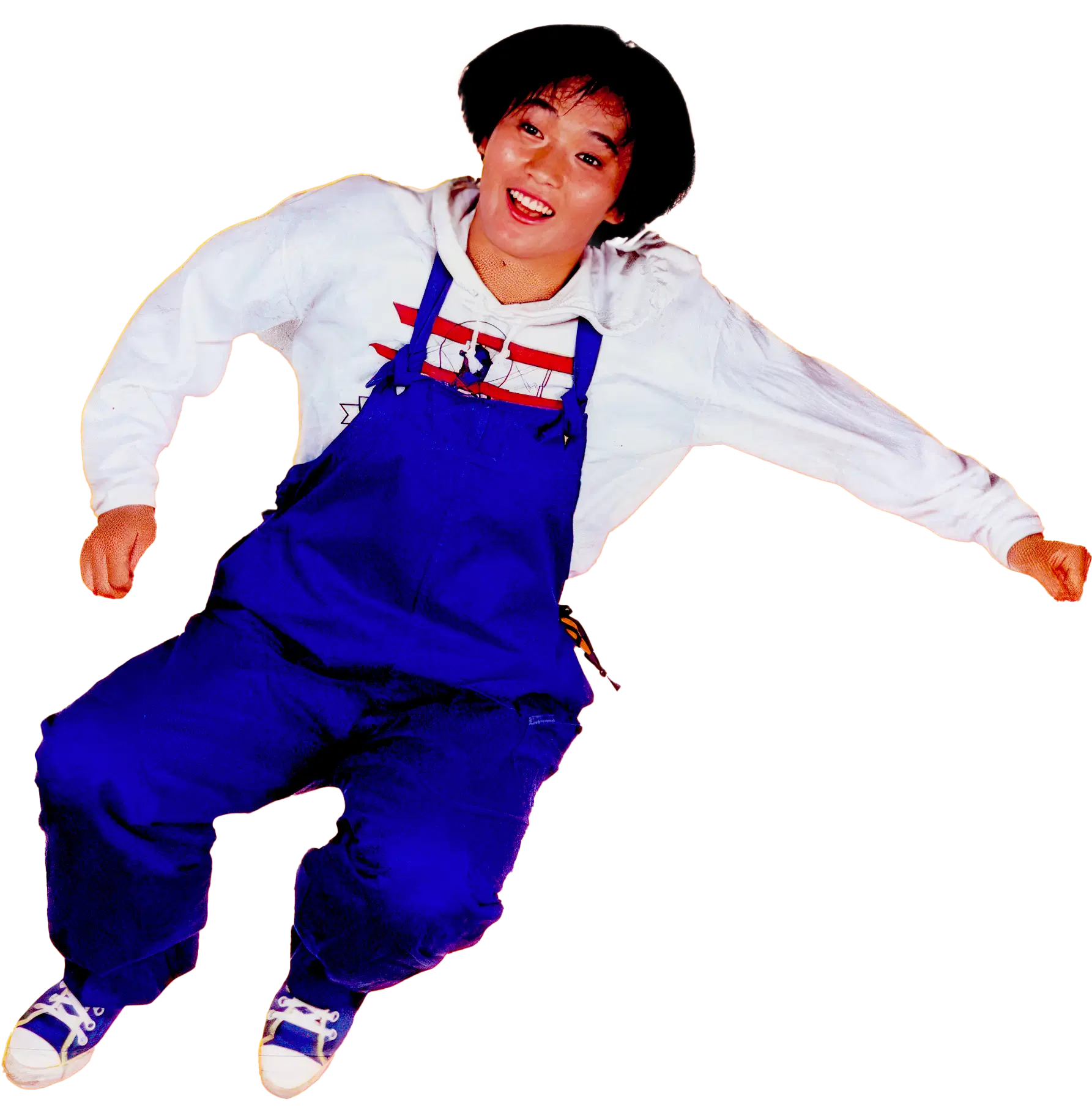
He is the self-described hardest working man in the business and has had one of the strangest journeys towards success in recent memory. Through hard work and unyielding determination, he pushed himself to the heights of the industry.
Diamond Dallas Page
Real Name: Page Joseph Falkenburg
Stats: 6′ 5″ 253 lbs.
Born: April 5, 1956
The saga of Diamond Dallas Page seems more akin to a Horatio Alger tale than a wrestling biography. Although flavored with grandiosity and passion, it is the story of a man’s dedication and determination to become a star in professional wrestling despite the odds and the naysayers standing in his way.
Early Life
Dallas Page was born Page Falkenburg in Point Pleasant, New Jersey, to Sylvia and Page Falkinburg Sr . He played varisty basketbal for Point Pleasant Borough High School in Point Pleasant, before briefly attending Coastal Carolina University in South Carolina. He left college and made his wrestling debut in Canada in 1979, but suffered a severe knee injury, leading him to make a detour from his career.
Career
Standing 6′ 5″ and weighing 253 lbs., he used his physical stature to keep patrons in line as the manager of Norma Jean’s, a night club in Ft. Myers, Florida. Attracted to the glamour and lucrative nature of the professional wrestling industry, Page took a gamble and decided to move North to Minnesota and entered the American Wrestling Association. Having sent audio tapes to the promotion as part of his application, he was hired as a color commentator for the promotion’s broadcasts. Soon he looked at one of the tag teams working within the promotion and decided that he wanted to serve as their manager. Under his guidance, the team of Badd Company (Paul Diamond and Pat Tanaka) quickly became the AWA tag team champions. His early success prompted a number of performers to seek out his services and soon he was managing a number of performers, including Madusa and Curt Hennig.
In light of this success, it surprised many when Page left the AWA and ventured down to the Florida Championship Wrestling territory where he served as a color commentator alongside the legendary Gordon Solie. In addition to this new job, he actually sought work in other wrestling promotion (including the World Wrestling Federation (WWF) and World Championship Wrestling (WCW)). In 1990, he gained a tryout as an announcer for the WWF but wasn’t hired. He was able to appear at Wrestlemania VI, however, as he drove “Rhythm and Blues” (The Honky Tonk Man and Greg Valentine) to the ring in his iconic pink Cadillac. When Championship Wrestling from Florida closed down, he joined WCW as an announcer and eventually was called upon to serve as a manager again, this time for the Fabulous Freebirds. The Freebirds were comprised of Michael P.S. Hayes and Ron Garvin and in 1991 they succeeded in winning the NWA tag team title. Page next took on a young wrestler named Scott Hall who then performed under the moniker “the Diamond Studd.” Accompanied to the rings each night by a bevy of “Diamond Dolls,” Page often became physically active in helping Hall. As a result, several people recommended that he enter the WCW Power Plant training school and learn the ropes of performing inside of the ring. He did so and saw his first “official” mat action on November 18, 1991 as Hall’s tag team partner against Kevin Sullivan and the Assassin. After a year of very limited success, his career was put in jeopardy when he tore the rotator cuff in his shoulder in a match against Shanghai Pierce and was put out of action for 11 months. He was subsequently released by WCW.
Undaunted, Page determined to continue improving his character and sought the help of Jake “the Snake” Roberts. Roberts advised on the psychological aspects of the business and after his injury had healed he made his way back to WCW, which was now under the direction of his former announcing partner Eric Bischoff. Bischoff saw talent in Page and took a gamble on him, giving him a minor push along with a bodyguard and a valet (his real-life wife Kimberly) who was referred to as the Diamond Doll. He finally found his first bit of success at the 1995 Fall Brawl pay per view event where he defeated the Renegade to gain the WCW television title. Just when it seemed he was climbing the ladder towards success, he was booked in some of the most ridiculous and embarrassing angles in recent memory (including one where he stole Kimberly’s $1 million in bingo winnings and then lost it all). Losing feuds to Johnny B. Badd (Marc Mero) and the Booty Man (Ed Leslie), Page seemed to be back at square one in his career.
Despite being named Pro Wrestling Illustrated’s 1995 Most Improved wrestler, at 39 years of age, most thought he would remained a glorified lower-card performer destined for oblivion. Page, however, would not give up on his career and fortunately for him, neither did Eric Bischoff. Bischoff allowed Page to enter the Battle Bowl tournament and Page shocked everyone when he won the competition and became “Lord of the Ring.” Capitalizing on this success, Page began to engage in outstanding bouts against Eddie Guerrero and Marcus Bagwell.
In 1996, Scott Hall returned to WCW along with Kevin Nash and turned the wrestling world on its ear. They teamed with Hulk Hogan to form the New World Order, which threatened to destroy WCW. Having spent earlier periods of his career working with Hall and wrestling against Nash, Page seemed a likely candidate to become a new member of the NWO. He refused to join them, however, and began a year long, pitched battle against members of the NWO. After a series of brutal feuds with Savage (voted PWI 1997 Feud of the Year), Page defeated Curt Henning to win the WCW United States title on December 28, 1997. He subsequently defended the title against all comers, including Chris Benoit and Raven, and utilizing his new finishing move (called the Diamond Cutter) Page quietly became one of the most popular wrestlers in WCW. After losing the U.S. strap to Raven, he reclaimed it six months later from Bret Hart. Finally, he felt he had reached a point where he could demand a shot at the top belt in the business, the WCW Heavyweight championship which was held by Hulk Hogan. WCW used his ties with the entertainment industry to team up on one occasion with NBA All Star Karl Malone and on another with television host Jay Leno to take on Hogan and his partner, basketball star Dennis Rodman.
 Having gained a great deal of notoriety, Page was finally elevated to the top of the industry and shocked a great many when he won a four-way dance matchup against Hogan, Sting and Ric Flair on April 11, 1999 in Tacoma, Washington. After losing the belt two weeks later to Sting, he reclaimed it in an impromptu four way match against Sting, Kevin Nash and Goldberg. Unfortunately, backstage politics undermined his title reign and he lost the belt to Kevin Nash a few weeks later. As poor booking and backstage powerplays caused WCW’s television ratings to plummet, Page saw less and less time in the main event and he seemed to be a forgotten man for the rest of 1999. He did not remain idle, however, and starred in a movie, Ready to Rumble, along with David Arquette and in the spring of 2000 found himself back in the title hunt capturing the WCW Heavyweight again. Injuries, however, forced him to take some time off to heal and he was forced to reevaluate his next steps in the business.
Having gained a great deal of notoriety, Page was finally elevated to the top of the industry and shocked a great many when he won a four-way dance matchup against Hogan, Sting and Ric Flair on April 11, 1999 in Tacoma, Washington. After losing the belt two weeks later to Sting, he reclaimed it in an impromptu four way match against Sting, Kevin Nash and Goldberg. Unfortunately, backstage politics undermined his title reign and he lost the belt to Kevin Nash a few weeks later. As poor booking and backstage powerplays caused WCW’s television ratings to plummet, Page saw less and less time in the main event and he seemed to be a forgotten man for the rest of 1999. He did not remain idle, however, and starred in a movie, Ready to Rumble, along with David Arquette and in the spring of 2000 found himself back in the title hunt capturing the WCW Heavyweight again. Injuries, however, forced him to take some time off to heal and he was forced to reevaluate his next steps in the business.
Retirement
No matter what he future holds for him, Dallas Page has proven his critics wrong and has achieved more than anyone thought possible. His drive towards success and his work ethic has set a standard for young performers entering the sport. He has truly proved to be a diamond in the rough.
Resources
“Diamond Dallas Page.” Wikipedia – https://en.wikipedia.org/wiki/Diamond_Dallas_Page
WWE. “Diamond Dallas Page.” – www.wwe.com
Pro Wrestling Fandom. “Diamond Dallas Page.” – prowrestling.fandom.com
Diamond Dallas Page Official Website. – www.diamonddallaspage.com/about/
IMDb. “Diamond Dallas Page.” – www.imdb.com
Frequently Asked Questioons
Dallas Page encountered several obstacles early in his career, including a severe knee injury that initially sidetracked his aspirations. He also faced skepticism from naysayers who doubted his potential in professional wrestling due to his late start in the sport and his physical setbacks.
After working as a manager in the AWA and serving as a color commentator in Florida Championship Wrestling, Page was encouraged to train as a wrestler. He joined the WCW Power Plant training school and began competing in the ring, first as Scott Hall’s tag team partner and later as a solo wrestler.
Page’s wrestling career saw several significant achievements, including winning the WCW Television Title in 1995, the WCW United States Title in 1997, and the WCW Heavyweight Championship in 1999. His popularity soared with the development of his signature move, the Diamond Cutter.
Page’s refusal to join the NWO in 1996 and his subsequent feuds with members of the group, particularly Randy Savage, significantly boosted his profile. These storylines cemented him as a fan favorite and a key figure in WCW during its peak years.
Despite the challenges and setbacks, Diamond Dallas Page’s career is seen as a testament to hard work, determination, and resilience. His journey from manager to world champion, along with his late start in the sport, has inspired many and left a lasting impact on the wrestling industry. His work ethic and dedication have set a standard for young wrestlers and showcased that success can be achieved at any stage of life.





 Although Nagayo retired from in-ring competition, she remained involved in the wrestling industry. In 1995, she co-founded GAEA Japan, a women’s wrestling promotion, which operated successfully until it closed in 2005. In 2015, she founded another women’s wrestling promotion, Marvelous, further demonstrating her ongoing commitment to the growth and development of women’s professional wrestling.
Although Nagayo retired from in-ring competition, she remained involved in the wrestling industry. In 1995, she co-founded GAEA Japan, a women’s wrestling promotion, which operated successfully until it closed in 2005. In 2015, she founded another women’s wrestling promotion, Marvelous, further demonstrating her ongoing commitment to the growth and development of women’s professional wrestling.
